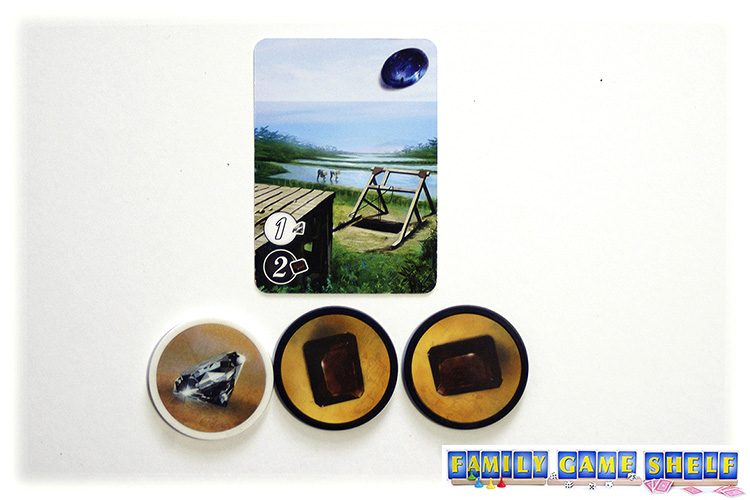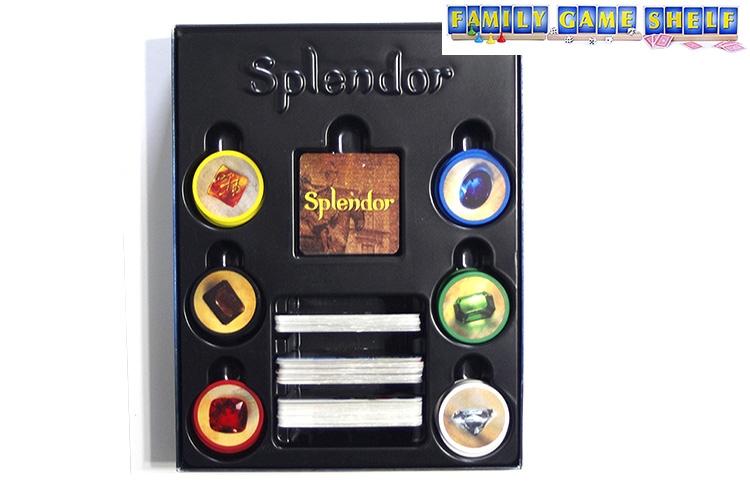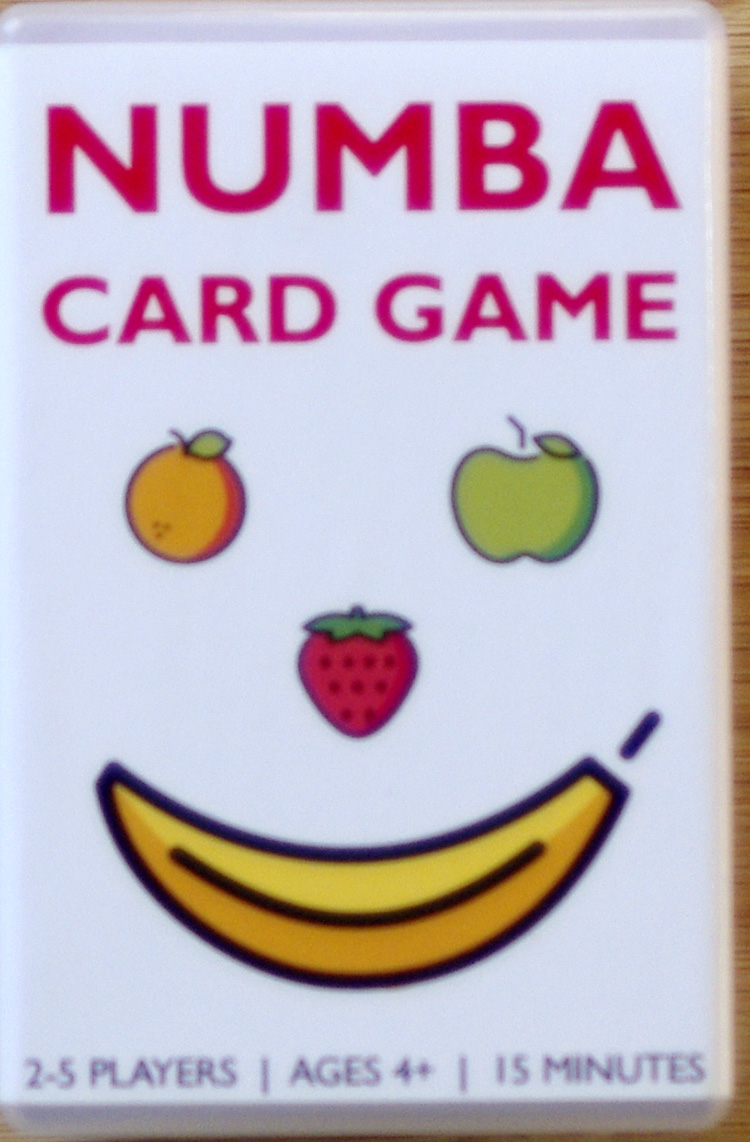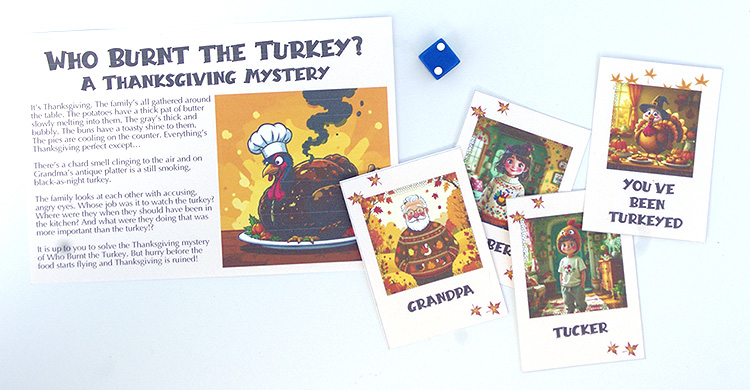2 to 4 players ages 10 and up
In Splendor, you are a merchant who is working toward making the best jewels out of raw gems. The first time that we played, we found it complicated. However, once we had played one time it became easy to understand. Like some of the great games, it has a learning curve but one that is well worth learning.
Keep reading to learn how to play, what the rules are and see why we rank Splendor in the same class as Jok-R-Ummy, Spot It and Carcassonne–as one of most favorite games.
This post may contain affiliate links. I receive a small commission at no cost to you when you make a purchase using my link.
The Goal of Splendor
The goal of the game is to be the first player to reach 15 prestige points.
The Parts
There are three different types of parts to Splendor.
First, there are the tokens. These are coloured coins. The coins come in green, red, blue, white and brown. There are also gold piece coins that are wild.
Next, there are the development cards. These have three colours, or difficulty levels to them. The green Splendor cards have one dot on them. These are the easiest cards. Next, are the yellow cards. They have two dots on them and are of medium difficulty. Last are the blue cards. These have three dots and are the hardest cards to obtain.
Some of the cards have prestige points on them and some do not. Typically, the green cards, or the easiest cards have very few prestige points on them. The blue cards have the most points on them.

Last, are the Nobel tiles. These are square tiles with people’s images on them.

Splendor’s Set Up
To start a game of Splendor, you first shuffle and then place four cards of each difficulty level face up in a row—four green, four yellow, four blue. Beside each row you place the remaining stack for that colour.
Next, you shuffle and place the Nobel tiles at the top of the cards. The number of Nobel tiles depends on the number of players. There should be one tile for every player and an extra. The Nobel tiles are all worth 3 points each.

Purchasing Development Cards
Each of the development cards shows how much that card costs. This price is shown in the lower left corner. It will show a gem colour and a number. If a card shows 1 green, 2 blue and 2 red then these are the number of gems that you need to buy it.

When buying a card, a player can use either coins or cards or a mix of the two. When a coin is used, the player must return it the bank. On the other hand, when a card is used, the player keeps that card to use again.
When a card is either purchased or reserved, it is then replaced by the top card on that coloured stack.

How to Play Splendor
On a player’s turn, she has a choice of four different actions.
First, she can choose to collect 3 gem coins from the bank.
Next, she can choose to take 2 gem coins of the same colour from the bank. Note: this action can only be done if there are at least 4 coins of that colour in the bank.
Third, she can reserve a development card and collect a gold piece coin. See below for more info on this action.
Last, she can buy any of the cards that are face up, or any card that she has in reserve.
Collecting Coins
Sometimes there may not be enough coins in the bank for a player to take three. In this case a player may take two or even one coin.
A player can only have ten coins in his stash at a time. At the end of a turn, if a player has more than ten coins, he must return the over amount to the bank.
The coins that a player has must be visible to the rest of the players.
Reserving a Card
On a player’s turn, if she wishes to reserve a card, she simply picks up the card she would like and places it in her hand as in traditional card games. She also collects a gold piece coin.
A player can only have three reserved cards in her hand at a time. The only way to get rid of a reserved card is to buy it.
Purchasing Cards
When you purchase a development card, you place it on the table in front of you. It is best to keep these cards in coloured rows. You can then use those cards to buy other cards with.
The Noble Tiles
Each of the tiles has a list of gems that are needed to receive a visit from them. For example, a tile might have 4 brown and 4 blue gems on them. When you are the first player who earns 4 brown card and 4 blue cards, she will then get the tile that matches. The tile then stays with that player.
The Nobles are all worth 3 points. You can earn as many of the Nobel tiles as you can.
The Noble tiles are not replenished after they are removed from the playing area.
Ending Splendor
When the first player reaches 15 points, then the players who go after that player get one more turn to try to earn more than 15 points.
Winning Splendor
The player with the most points wins the game.
Two and Three Player Games
Splendor is a great game to play with three or even two players. However, there are a few rule changes.
Two Player Splendor
For two players, the bank starts with only four of each colour of coin. Three Noble tiles are in play.
Three Player Splendor
In the three player game, there are five coins of each colour and four Noble tiles are in play.
What We Like
First, the quality of this game is outstanding. Even the box is high quality with a special spot for all the pieces—even the different level of cards are separated so no sorting through cards to get them right.
Next, the level of strategy is just right. It is not a purely luck game, although luck does play into it. Despite its original learning curve, Splendor is easy to play without a ton of complicated rules to understand.
Best of all, Splendor plays just as well with two, three or four players. The strategy changes slightly between a two player and four players as cards go faster and can even run out.

What We Don’t Like
First, it is a little complicated for the first round or two. Plus, you need to play on a table—we tried to play on the couch the first time, that could have added to our learning curve.
Next, you have to make sure that you do a really good job of shuffling the cards after playing. Otherwise, you end up with all the same coloured cards coming up. Also, the Noble tiles need to be shuffled well. This is a little harder as there are so few of them. We often shuffle them and then fan them out and let someone pick them at random.
Is Splendor Worth Adding to your Family Game Shelf?
Splendor is more than worth it. It was quickly become one of our family’s favorite games. The skill, the luck, the feeling when you buy a card that makes the other groan—because they were going to buy it: all of these things are more will have everyone saying “can we play one more time?” Make room on your Family Game Shelf for Splendor, but make sure its spot is on top as you’ll want to play often.
To add Splendor to your family game shelf shop here. (For Canadians shop here.) They also have replacement gems, a Marvel edition and an expansion.
If you’re looking for more of the best rated games, check our Recommendations page here. And for even more fun check out our Family Game Shelf Sop here for tons of seasonal and unique games; there’s something for everyone!
Rating: 6

Julia:

Carrie-Anne:

Joel:

For more of our favorite games see our list of 2020 Best Games. Also be sure to check our game reviews, dice games and cards games.
To add Splendor to your Family Game Shelf, shop here.
Pro: good for 2, 3, 4 players, light strategy, quality, easy to play
Con: learning curve at start,
Mom: critical thinking, planning




Be the first to reply